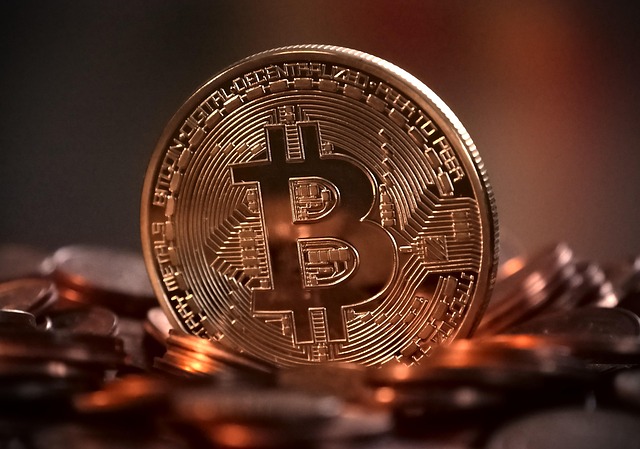EY updates privacy L2 as nixed Tornado Cash sanctions ease fears
Big Four accounting firm EY, formerly Ernst & Young, has changed its enterprise-focused Ethereum layer-2 blockchain Nightfall to a zero-knowledge rollup design as it says corporate clients are more comfortable with privacy solutions with easing US sanctions.EY said in an April 2 announcement that Nightfall’s new source code, “Nightfall_4,” simplifies the network’s architecture and offers near-instant transaction finality on Ethereum while making it more accessible to users than its previous optimistic rollup-based version.EY’s global blockchain leader, Paul Brody, told Cointelegraph that switching to a ZK-rollup model “means instant finality, but it also makes operations simpler since you don’t need a challenger node to secure the network,” which verifies the correctness of transactions.The move away from optimistic rollups means Nightfall users won’t need to challenge potentially incorrect transactions on Ethereum and wait out the challenging period, leading to faster transaction finality.No such feature is present with zero-knowledge rollups, meaning that a transaction becomes final as soon as it is added into a Nightfall block, EY said. It is the fourth major update to Nightfall since EY launched the business-focused Ethereum layer 2 in 2019.Nightfall enables the firm’s business partners to transfer tokens privately using Ethereum’s security while being cheaper than the base network. It also uses a technology that binds a verified identity to a public key through digital signatures to try to stem counterparty risk.Nixed Tornado Cash sanctions “helped people feel comfortable”Brody said the US Treasury’s Office of Foreign Assets Control (OFAC) sanctions on the crypto mixing service Tornado Cash “had a chilling effect on legitimate business user interest.”“Even though we long ago took steps to make Nightfall unattractive to bad actors, since it cannot be used anonymously, the removal of OFAC sanctions has really helped people feel comfortable that using a privacy technology will not be risky,” he added.Nightfall’s code is open source on GitHub but remains a permissioned blockchain for EY’s customer base, competing with the likes of the IBM-backed Hyperledger Fabric, R3 Corda and the Consensus-built Quorum.Brody said that EY’s blockchain team is working toward “a single environment that supports payments, logic, and composability.”Currently, the firm requires Nightfall and Starlight, a tool that can change smart contract code to enable zero-knowledge proofs “to enable complex multiparty business agreements under privacy,” he added.“We’ll spend some time supporting Nightfall_4 deployments initially,” Brody said. “Then we’ll move on to the development of Nightfall_5.”Magazine: What are native rollups? Full guide to Ethereum’s latest innovation
Bitcoin rally to $88.5K obliterates bears as spot volumes soar — Will a tariff war stop the party?
Bitcoin price caught an unexpected bid by rallying to a session high at $88,500, but will the price gains be capped at a multimonth overhead resistance that is aligned with the 50-day moving average? Key points:Bitcoin extended its April. 1 gains as news that the Trump administration had not finalized its “Liberation Day” tariffs emerged. Israel, Mexico and India have already rolled back their tariffs on US imports or suggested that they will not do “tit for tat” tariffs in response to the expected April 2 US tariffs. Bitcoin (BTC) trades slightly below a 3-month descending trendline resistance where the price has consistentlybeen rejected during past rallies. Total market liquidations over the past 12-hour trading period have reached $145 million, with $69.4 million of the figure being Bitcoin shorts. Data from Kingfisher, CoinGlass and Velo show short liquidations playing a role in today’s push above $88,500. Crypto market liquidations in the past 12-hours. Source. CoinGlass For the past few months, Bitcoin price has struggled to hold the gains accrued from rallies driven by leverage. Looking beyond futures markets, there are some positives that suggest that the market structure is slowly transitioning from bearish to bullish. As shown in the chart below, recent rallies were accompanied by a strong bid in the spot market and the return of the Coinbase Pro premium, leading some analysts to speculate that the shift was influenced by buying from Strategy and other companies focused on building Bitcoin reserves. Coinbase premium index. Source: CryptoQuantOver the last two weeks, GameStop, MARA, Metaplanet and Strategy all announced plans to buy more Bitcoin, with GameStop being on the verge of purchasing and Strategy actively adding to its BTC position. GameStop secures $1.5B for possible BTC purchase. Source: ArkhamIn the short-term, sustained spot buy volumes at Binance and Coinbase Pro, and the crypto and equities markets’ response to President Donald Trump’s “Liberation Day” tariffs are likely to be the most impactful factors that will influence the current bullish momentum seen in Bitcoin price. Related: Bitcoin price on verge of breaking 10-week downtrend — Is $90K BTC next?This article does not contain investment advice or recommendations. Every investment and trading move involves risk, and readers should conduct their own research when making a decision.
Sentient open-source AI search outperforms GPT-4o and Perplexity
Sentient, an artificial intelligence development platform backed by Peter Thiel’s Founders Fund, has released an open-source AI search framework that it says outperforms leading closed-source competitors.The company announced the public release of Open Deep Search (ODS) on April 2, describing it as a high-performance, developer-friendly alternative to platforms like Perplexity AI and OpenAI’s GPT-4o.Sentient’s ODS aims to empower developers with open-source “Loyal AI” models, which Sentient says preserve the original intent of their developers.The firm’s fingerprinting technology allows developers to protect intellectual property while maintaining model openness — aiming to solve the biggest issue of open-source AI, the challenges of monetizing a model without centralization.“AI should belong to the community, not controlled by closed-source corporations,” according to Himanshu Tyagi, co-founder of Sentient and professor at the Indian Institute of Science.“We’re building, monetizing and delivering open-source AI with a key principle in mind: singularity in intelligence but plurality in use cases,” he added. ”Open-source development ensures performance and user control that closed systems simply cannot match.”Related: Crypto trader turns $2K PEPE into $43M, sells for $10M profitSentient’s ODS outperforms ChatGPT, PerplexitySentient’s ODS scored 75.3% accuracy on the “Frames” benchmark, which measures factuality, retrieval and reasoning capabilities, used to answer complex “multi-hop questions” that require the integration of multiple sources.ODS surpassed OpenAI’s ChatGPT-4o Search Preview’s 50.5% and the Perplexity Sonar Reasoning Pro, which scored 44.4%. To prevent potential bias, Sentient ensured that its researchers didn’t have access to the Frames testing sets during the benchmarking process.Dobby NFT mint. Source: Sentient“Independent verification is only needed for closed-source solutions because open-source solutions have no incentive to falsely report the evaluations,” Tyagi said, adding:“Anyone with a computer can run our code, reproduce our results, and verify whether it is correct or not. The numbers reported can be reproduced using the repo’s eval section by anyone and thus are globally verifiable.”The ODS release follows growing interest in Sentient’s platform. The firm said it amassed more than 1.8 million waitlist registrations in the lead-up to the launch.Related: $1T stablecoin supply could drive next crypto rally — CoinFund’s PakmanA turning point for open-source AIThe release of Sentient’s new open-source search framework comes amid a tipping point for open-source AI development.“We’re witnessing a significant shift as open-source AI solutions increasingly challenge closed-source dominance,” Tyagi said.“Examples such as DeepSeek’s advancements in reasoning, Manus’s innovations with agents, and now our own contributions to ODS with advanced AI search frameworks highlight this shift,” he added.“Open-source models can easily outperform closed-source giants with the right architecture,” said Sewoong Oh, Sentient’s lead researcher and professor at the University of Washington. “The results of these benchmarks validate our mission to create an open ecosystem that benefits all AI builders and users.”The launch also builds on Sentient’s earlier momentum. In February, the firm completed one of the largest NFT minting campaigns to date, with more than 650,000 participants gaining fractional ownership of its AI models.Magazine: ‘Chernobyl’ needed to wake people to AI risks, Studio Ghibli memes: AI Eye
Trader uncovers signs XRP price may have bottomed — Is a rally to $3.80 next?
XRP (XRP) price fell 22% between March 19 and March 31, potentially forming a local bottom at $2.02. The price then increased by 9% to $2.20 before retracing to the current levels. Has the popular altcoin finally bottomed out, or is there a deeper retracement in the cards? XRP bullish divergence on multiple timeframesThe XRP relative strength index (RSI) displays bullish divergence conditions in lower timeframes, according to popular analyst CasiTrades.A bullish divergence is when the asset’s price prints lower lows, whereas the RSI produces higher lows, indicating that downward momentum is waning.“After reaching the 0.786 retrace at $2.05, XRP is printing bullish divergences from the 15-min all the way up to the 4-hour chart,” the analyst said in a March 31 post on X. CasiTrades notes that these signals are a positive indicator both for short-term bounces and potential macro recovery.“That’s the kind of signal we want to see for both short-term bottom and macro! -the bounce is holding so far!”XRP/USD hourly chart. Source: CasiTradesShe added that $2.25 remains a key resistance level to watch, as breaching this level with strong momentum would signal a convincing bullish breakout. “If we break above $2.25 with strong momentum, that would invalidate the need for another support retest—a very bullish sign,” CasiTrades said, adding that the demand zone between “$2.00 and $2.01 remains a support if the $2.05 doesn’t hold.”The analyst projects a bullish month for XRP in April, with targets of $2.70 and $3.70 in the short term.“Once the price reaches its target, I expect a large impulse to the upside! Key resistance aligning to $2.70 and $3.80.”Related: XRP funding rate flips negative — Will smart traders flip long or short?Is the XRP local bottom in?Despite XRP’s recent recovery from local lows, the risk of a deeper correction remains, according to veteran trader Peter Brandit.Last week, Brandt said the presence of a “textbook” head-and-shoulders pattern (H&S) could see XRP price as low as $1.07.This potential H&S pattern is still in play on the daily chart (see below) and will be completed on a break and close below the neckline at $1.90. If the price stays below the neckline, the pair could plummet to $1.50 and then to the pattern’s target of $1.07.Brandt said:“Below $1.9, I would not want to own it. H&S projects to $1.07. Don’t shoot the messenger.”XRP/USD daily chart with H&S pattern. Source: Cointelegraph/TradingViewBrandt states this bearish chart pattern will be invalidated if buyers push and maintain the price above $3.00.Meanwhile, macroeconomic headwinds from US tariffs on April 2 could spook traders, pulling the XRP price toward $1.31.But not everyone agrees. Popular analyst Dark Defender, for example, shared a positive outlook, saying that XRP price is likely to revisit the last Fibonacci level at $2.04 before bouncing back again.According to the analyst, a key resistance level for XRP is $2.22, which “should be broken” to ensure a sustained recovery toward the Wave 5 target at $8.“April-May will be hot, and our targets of Wave 5 stand at $5-8 levels, as expected.”XRP/USD daily chart. Source: Dark DefenderThis article does not contain investment advice or recommendations. Every investment and trading move involves risk, and readers should conduct their own research when making a decision.
7-Eleven South Korea to accept CBDC payments in national pilot program
South Korea’s 7-Eleven stores will accept payments in the country’s central bank digital currency (CBDC) until June, as the retailer participates in the test phase of its CBDC project. The convenience store chain will reportedly provide a 10% discount on all products paid for with CBDC during the test period. According to Moon Dae-woo, head of 7-Eleven’s digital innovation division, the company is making an effort to incorporate digital technology advancements in its operations. The executive added that the company’s participation in the CBDC test will help accelerate the firm’s digital transformation. Many stores will participate in South Korea’s CBDC testing phase, which runs from April 1 to June 30. The project also involves 100,000 participants who will be allowed to test payments using CBDC issued by the central bank. Central bank digital currencies are digital assets issued by government agencies. Like other digital assets, CBDCs offer faster and more modernized payment features. However, unlike Bitcoin and other privacy-focused tokens that offer certain levels of anonymity, CBDCs are controlled and monitored by governments. Related: Over 400 South Korean officials disclose $9.8M in crypto holdingsSouth Korea tests CBDC from April to JuneOn March 24, government agencies including the Bank of Korea, the Financial Services Commission (FSC) and the Financial Supervisory Service (FSS) announced the CBDC test. Participants can convert their bank deposits into tokens stored in a distributed ledger during the test period. The tokens hold the same value as the Korean won.The government agencies said citizens aged 19 or older with a deposit account in a participating bank could apply to take part. Registrations were limited to 100,000 participants. KB, Koomin, Shinhan, Hana, Woori, NongHyup, IBK and Busan are among the banks participating in the CBDC tests. Apart from 7-Eleven, participants can use their CBDCs in coffee shops, supermarkets, K-Pop merchandise stores and delivery platforms. However, users will be limited to a total conversion limit of 5 million won ($3,416) during testing. The Bank of Korea first announced the retail CBDC testing for 100,000 users in November 2023 and was originally scheduled to begin in the fourth quarter of 2024. The FSS said the country’s CBDC test represents a step toward creating a prototype for a “future monetary system.”Magazine: Ridiculous ‘Chinese Mint’ crypto scam, Japan dives into stablecoins: Asia Express
GameStop finishes $1.5B raise to add Bitcoin to its balance sheet
Video game retailer GameStop Corporation (GME) has finished a convertible debt offering that raised $1.5 billion, with some proceeds earmarked for buying Bitcoin.The offering was initially set to raise at least $1.3 billion, but purchasers opted for an additional $200 million aggregate principal amount of notes, GameStop said in an April 1 filing with the Securities and Exchange Commission.”The company expects to use the net proceeds from the offering for general corporate purposes, including the acquisition of Bitcoin in a manner consistent with the Company’s Investment Policy,” GameStop added.The convertible notes are debt that can later be converted into equity and are scheduled to mature on April 1, 2030, unless earlier converted, redeemed or repurchased.The conversion rate for the notes will initially be 33 shares of Common Stock per $1,000 principal amount of notes, according to the filing. GameStop shares didn’t see a significant move following the close of the convertible debt offering. GME closed the April 1 trading day up 1.34% at $22.61 and only saw an extra 0.5% bump after the bell, Google Finance data shows.GameStop’s share price barely moved after sharing it closed the convertible debt offering. Source: Google FinancePositive shareholder sentiment saw the stock jump nearly 12% to $28.36 on March 26, the day after GameStop announced its Bitcoin (BTC) plan, but its fortunes reversed the next day, with GME shares dropping nearly 24% to $21.68.Analysts at the time suggested the chilly reception reflected shareholders’ fear of GameStop’s deeper problems with its business model. GameStop joins growing Bitcoin move On March 25, GameStop confirmed that it had received board approval to invest in Bitcoin and US-dollar-pegged stablecoins using the notes and its cash reserves. Those reserves stood at $4.77 billion as of Feb. 1, compared with $921.7 million a year earlier, according to its 2024 fourth-quarter financial statements. GameStop is a relative latecomer among public companies creating Bitcoin treasuries. A slew of others have already added Bitcoin to their balance sheets in a playbook popularized by Micheal Saylor’s Strategy.Related: Metaplanet adds $67M in Bitcoin following 10-to-1 stock splitThe video game retailer previously made forays into the crypto space with a crypto wallet for its users, which it eventually shut down in November 2023 due to regulatory uncertainty.GameStop is also considered the first example of meme stock success after a short squeeze in 2021 that sent the stock surging over 1,000% in a month as traders flipped the table on hedge funds that had been making money shorting on the company.Magazine: SEC’s U-turn on crypto leaves key questions unanswered
Trump-affiliated crypto mining venture mulls IPO — Report
American Bitcoin Corp., a Trump family-backed crypto mining operation, has plans to raise additional capital, including through an initial public offering (IPO), according to an April 1 report by Bloomberg. On March 31, Hut 8 — a publicly traded Bitcoin (BTC) miner — acquired a majority stake in American Bitcoin (formerly American Data Centers), whose founders include Donald Trump Jr. and Eric Trump. After the deal announcement, Hut 8 transferred its Bitcoin mining equipment into the newly created entity, which is not yet publicly traded. While American Bitcoin will focus on crypto mining, Hut 8 plans to target data center infrastructure for use cases such as high-performance computing. The deal “evolves Hut 8 toward more predictable, financeable, lower-cost-of-capital segments,” Asher Genoot, CEO of Hut 8, said in a statement.“So you can see this in the long term as two sister publicly traded companies,” Genoot told Bloomberg. “One that is energy, infrastructure data centers and the other one that’s Bitcoin, AISCs and reserves and together they form a vertically integrated company that has some of the best economics out there.” According to Bloomberg, American Bitcoin is working with Bitmain, a Chinese Bitcoin mining hardware supplier. Bitmain has faced scrutiny after the US blacklisting of its artificial intelligence affiliate Sopghgo, Bloomberg reported. Bitcoin mining revenues per quarter. Source: Coin MetricsRelated: Analysts eye Bitcoin miners’ AI, chip sales ahead of Q4 earningsPivoting to new business linesBitcoin miners are increasingly pivoting toward alternative business lines, such as servicing artificial intelligence models, after the Bitcoin network’s April 2024 “halving” cut into mining revenues.Halvings occur every four years and cut in half the number of BTC mined per block.Miners are “diversifying into AI data-center hosting as a way to expand revenue and repurpose existing infrastructure for high-performance computing,” Coin Metrics said in a March report.Declining cryptocurrency prices have put even more pressure on Bitcoin miners in 2025, according to a report by JPMorgan.Magazine: Elon Musk’s plan to run government on blockchain faces uphill battle
Bybit to shut down NFT marketplace as trading volumes decline
Cryptocurrency exchange Bybit has announced the shutdown of its non-fungible token (NFT) marketplace.In an April 1 announcement, Bybit warned its users that its NFT marketplace will cease operations on April 8, 2025, at 4:00 pm (UTC). Furthermore, at that time, the exchange will also shut down its Inscription Marketplace and its initial decentralized exchange offering initiative.Related: Bybit: 89% of stolen $1.4B crypto still traceable post-hackThe announcement explains that the measures are part of Bybit’s “efforts to streamline our offerings.” The decision follows a similar decision by major NFT marketplace X2Y2 announced earlier this week.Charu Sethi, president at NFT-focused Polkadot and Kusama chain Unique Network, told Cointelegraph at the time that the market moved on from speculative to utility-based:“The speculative phase focused on collectibles and trading is over, but NFTs are now entering their next growth era as core infrastructure enabling massive opportunities in gaming, AI, fan engagement and content authentication.“The NFT market is on a downward trendThe non-fungible token market at large is seeing a significant downturn. Daily NFT trading volume was over $18 million 364 days ago and stands at $5.34 million at the time of publication — a 70% fall.Related: Bitcoin NFTs, layer-2 and restaking hype ‘completely gone’The fall is even more dire when contrasted with the heights reported on Dec. 17, 2024, when volume exceeded $113.6 million. Since then, volume has fallen by over 95%.NFT marketplace daily trading volume. Source: Token TerminalWeak investor interest in speculative NFTs is felt throughout the market. Reports resurfaced earlier today show that NFT project Gutter Cat Gang (GCG) saw a rocky token launch of its GANG token on Apechain on March 31, attributed to a “technical issue” by a third party. However, others pointed to reportedly low interest in the token.Data shared online indicated that the project only attracted 3.66 Ether (ETH), worth about $6,800, in its token sale. This is a far cry from the project’s $1 million target — but the team has not yet addressed those claims.A late March report shows that NFT sales dropped sharply in the first quarter of 2025, plunging 63% year-over-year. Still, the report points out some outliers such as Doodles, Milady Maker and Pudgy Penguins all outperforming expectations.Magazine: Trump-Biden bet led to obsession with ‘idiotic’ NFTs —Batsoupyum, NFT Collector
Smart money concepts in crypto trading: How to track and profit
Key takeawaysSmart money consists of institutional investors with advanced tools and knowledge that can influence crypto market trends.Key concepts like order blocks, liquidity zones and fair value gaps can help traders align with smart money strategies.Real-time tracking tools such as Glassnode, Nansen and CoinGecko allow traders to follow smart money’s moves and capitalize on them.Following the movements of smart money is akin to navigating the open sea, using its wake to position yourself for success in the crypto market.Smart money refers to the money being invested by individuals or organizations that know the markets inside and out. We’re talking about institutional investors, hedge funds and well-seasoned traders. These are the big players who have access to more information and tools than most of us, and they use that knowledge to make strategic decisions.In the crypto world, “smart money” is especially powerful because the market is still growing and changing quickly. These investors have a massive impact on the market. Their moves can shake things up, push prices up or down and even shift the way people feel about a particular coin or token.For example, when major players like BlackRock launch a Bitcoin exchange-traded fund (ETF), it can send waves through the market, influencing Bitcoin’s (BTC) price and the broader market. How do institutional investors influence crypto market trends?Institutional investors have substantial financial muscle, and when they enter the crypto market, they can make a big impact in several ways:Liquidity and stability: These investors bring in large amounts of capital, which makes it easier to buy and sell without dramatically affecting prices. This helps stabilize the market and makes it more attractive for other investors to get involved. When more money is flowing in and out smoothly, it creates a healthier, more balanced market. Price movements and volatility: When these big players make large investments (or sell off their holdings), it can cause prices to move quickly, either up or down. While this can create volatility, it also opens the door for traders to take advantage of those price swings.Regulation and legitimacy: As institutional investors get involved, they push for clearer regulations, which helps bring more legitimacy to the crypto space. For instance, the approval of Bitcoin ETFs has given institutional investors a regulated way to invest in Bitcoin, and that’s made the market more credible overall.In short, smart money is invested by experienced, informed players who make strategic moves, while ordinary money is often invested by individuals without deep market knowledge or insight.Smart money concepts (SMC) in crypto tradingSMC is a trading strategy focused on analyzing and capitalizing on the movements of smart money. The key elements of SMC include order blocks, liquidity zones and fair value gaps. Let’s break these down simply.Order blocks (OB)Order blocks are areas on the chart where big investors (the smart money) are making large buy or sell orders. These areas usually act like walls of support or resistance, meaning they are strong levels where prices tend to bounce back. You can spot order blocks by looking for clusters of high-volume candlesticks at certain price levels. These are often periods of sideways price movement followed by a sharp move up or down. When the price comes back to these areas, expect it to react in some way, as that’s where the smart money has been. Liquidity zonesLiquidity zones are collections of buy and sell orders at certain price points. These are like gathering spots where a lot of market participants are placing their orders, creating areas where price reversals or breakouts are likely to happen. Smart money investors love these zones because they can place large trades without drastically moving the market in one direction or the other. By understanding where liquidity zones are, you can predict where the market might go next.Fair value gaps (FVG)A fair value gap occurs when there’s a big imbalance between the buy and sell orders for an asset, creating a gap on the chart. This usually happens when the price moves quickly without much trading in between, and you can spot these gaps as spaces between candlesticks. These gaps act like magnets for the price. Markets often return to fill these gaps before continuing their trend. When you spot a gap, it could be a great opportunity to enter the market, knowing the price might come back to fill it before resuming its movement.How to track smart money moves in real timeThere are several tools that help decode blockchain data and spot smart money maneuvers instantly.1. GlassnodeCategory: On-chain analyticsWebsite: glassnode.comGlassnode gives you visibility into blockchain data unavailable through price charts alone. It shows how crypto flows between wallets, exchanges, and large holders, which is perfect for tracking institutional activity.Key features for smart money tracking:Exchange inflows/outflows: Watch for sudden spikes in BTC or Ether (ETH) moving in/out of exchanges, often a sign that big players are preparing to buy or sell.Whale metrics: Metrics like “Number of addresses holding 10K+ BTC” help identify when whales are accumulating or distributing.Realized cap and dormancy: This tells you whether older coins are moving, often a clue that long-term holders (smart money) are repositioning.Top tip! If you notice a sharp drop in exchange reserves for ETH on Glassnode, that could signal whales are withdrawing ETH to cold storage (a bullish sign). Combine this with price action, and you may have a high-confidence entry point.2. Nansen Category: Wallet and whale tracking Website: nansen.aiKey features for smart money tracking:Smart money dashboard: A curated list of wallets considered “smart” based on their historical returns and behavior.Token god mode: See what tokens smart money is buying or selling and how holdings have changed over time.Real-time alerts: Set alerts for transactions by specific wallets or token movements.Top tip! Suppose that you see that multiple smart money wallets started buying a low-cap altcoin over the past 24 hours. That might be a sign they know something before the broader market does. You can monitor for a breakout and act accordingly.3. CoinGecko Category: Market data and volume analysis Website: coingecko.comKey features for smart money tracking:Volume spikes: Watch for sudden increases in 24-hour volume that are not yet reflected in price — often a prelude to a move.Liquidity data: Find coins with deep liquidity where institutions might be operating.Exchange data: Monitor volume by exchange. If one exchange suddenly has massive buy pressure, smart money might be active there.Top tip! Perhaps a small-cap token sees a 5x spike in volume on Binance but hasn’t moved much in price yet. That divergence can indicate accumulation. You could do a deeper dive with onchain tools Nansen or Glassnode to confirm.4. Santiment Category: Market sentiment and onchain analytics Website: santiment.netKey features for smart money tracking:Social volume and sentiment: Gauge hype levels around tokens. Smart money often moves counter to the crowd.Whale transaction count: See how many large transactions (e.g., $100,000+) are happening for a given coin.Development activity: Some smart money tracks developer activity as a proxy for long-term value.Top tip! A token sees decreasing positive sentiment but a spike in whale transactions. That disconnect can signal smart money is accumulating while retail exits, a classic contrarian play.5. ChainalysisCategory: Blockchain forensics and risk detectionWebsite: chainalysis.comChainalysis focuses more on risk detection and compliance, but it can still be useful to track large, high-risk wallet movements and avoid traps or manipulated markets.Key features for smart money tracking:Address labeling: Know whether a wallet belongs to an exchange, scam, hacker group or institutional custodian.Transaction monitoring: Track big inflows/outflows and the origin of funds. Are they from DeFi protocols, over-the-counter (OTC) desks or mixers?Risk scoring: Avoid getting caught in tokens or wallets associated with pump-and-dump schemes or hacks.Top tip! If you see a large amount of ETH being sent from a wallet flagged as a known DeFi VC to an exchange, that could be a sign of upcoming selling pressure. Conversely, tracking inflows to cold wallets from institutions can be a bullish signal.Follow the Man o’ WarThink of crypto trading as the open sea, with smart money as powerful Man o’ War ships, navigating with advanced tools and knowledge. As a retail trader, you may not be in control of these ships, but you can follow their course.Using platforms such as Glassnode, Nansen, CoinGecko, Santiment and Chainalysis, you can track the movements of smart money in real-time. While you might not steer the ship, by observing its wake, you can adjust your course and position yourself for profitable opportunities.You don’t need to command the ship; just follow its lead to find your way to safe, profitable shores.
SIR.trading begs hacker to return $255K or ‘no chance for us to survive’
The founder of the recently hacked decentralized finance protocol SIR.trading has made an emotional plea to the attacker, asking them to return around 70% of the stolen customer funds otherwise, the protocol will not survive.“Here is my proposal, keep $100k as a fair share for your critical bug find, and return the remaining,” SIR.trading’s pseudonymous founder “Xatarrer” wrote in a March 31 onchain message to the attacker following the $355,000 hack on March 30.“We’ll call it even. No legal games, no drama,” they added. Xatarrer said that SIR.trading was built on the back of four years of late-night coding and $70,000 from friends and believers without any additional venture capital funding.“We grew to $400k TVL organically without any advertising. If you keep 100% of the funds, there is no chance for us to survive.”Xatarrer even praised the hacker for the sophisticated hack, stating that it was “almost beautiful if it wasn’t for all the funds people lost.”Source: SIR.tradingThe hacker hasn’t responded and has already transferred the stolen funds through to Ethereum privacy solution Railgun, according to data from Ethereum block explorer Etherscan.Xatarrer initially said on March 30 that the SIR.trading team intended to keep the protocol up and running despite the setback. “We’ve already started planning our next steps. Those impacted by the hack will not be forgotten,” it said on March 31.Hack resulted from feature added to Ethereum’s Dencun upgradeThe hacker targeted a callback function used in the protocol’s “vulnerable contract Vault” which leverages Ethereum’s transient storage feature. The hacker managed to replace the real Uniswap pool address used in this callback function with an address under the hacker’s control, allowing them to redirect the funds in the vault to their address by repeatedly calling the callback function until all of the protocol’s total value locked was drained.The transient storage feature was added to Ethereum in the March 2024 Dencun upgrade as a solution to offer users lower gas fees than gas typically required for regular storage.Related: DeFi hacks drop 40% in 2024, CeFi breaches surge to $694M — HackenSIR.trading’s documentation shows that it was billed as “a new DeFi protocol for safer leverage” to address some of the challenges that often occur in leveraged trading — such as volatility decay and liquidation risks.It comes as crypto lost to exploits and scams fell to $28.8M in March, blockchain security firm CertiK said in a March 31 X post. Around $4.8 million was subtracted from that figure after hackers involved in the 1inch Resolver incident returned the stolen funds.Crypto exploits and scams had one of its worst months in February, headlined by the $1.4 billion Bybit hack.Magazine: Should crypto projects ever negotiate with hackers? Probably










